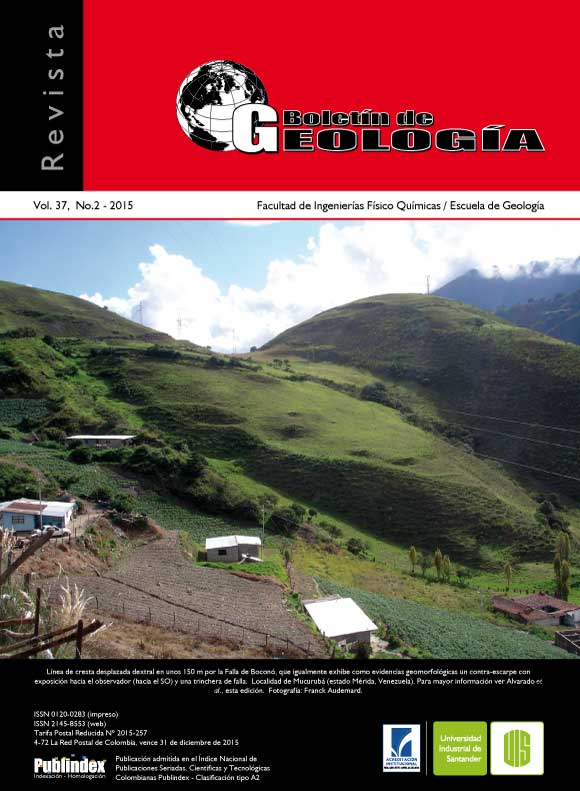THREE NEW RECORDS OF Orthaulax (Gastropoda: Strombidae) FROM LATE OLIGOCENE - EARLY MIOCENE SAN LUIS AND PATIECITOS FORMATIONS IN FALCÓN STATE, VENEZUELA
Published 2015-02-18
Keywords
- Orthaulax,
- Oligocene-Miocene,
- Falcón,
- Venezuela
How to Cite
Abstract
Until now, the genus Orthaulax has been considered as absent from the Oligo-Miocene basins of South America. On the other hand, it proliferated in the infralittoral environments from the calcareous platforms of the Greater and Lesser Antilles, whose development was influenced by the predominance of plankton-rich and oxygen-rich warm waters entering from the Pacific Ocean. However, in the Venezuelan basins, characterized by muddy sediments, zoned marine waters and the lack of carbonates; six fossil specimens were found and assigned to Orthaulax aguadillensis, O. conoides and O. inornatus, belonging to the family Strombidae, also representing all growth stages and with high quality preservation in paleontological sites from the Bolívar Municipality; where reefal (San Luis) and shallow marine inlet (Patiecitos) formations outcrop. To complement this, we also report the presence of barnacle larvae, which confirms the prevalence of paleodepths of no less than 16 m. Finally, this new record of the genus Orthaulax, provides information on the prevailing paleoenvironment during the rise and extinction of the San Luis reefal complex and increases to four the number of gastropods present in Paleoegene-Neogene marine formations of the Falcón State.
